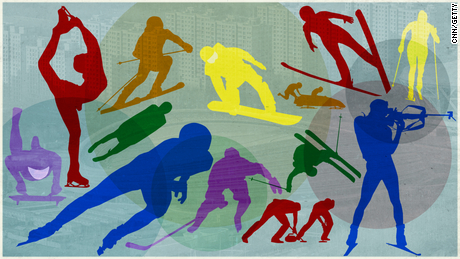What is patriarchy? What does it mean and why is everyone talking about it?
Updated 0934 GMT (1734 HKT) August 3, 2023
This story is part of As Equals, CNN's ongoing series on gender inequality. Find out more about it here.
(CNN)"Barbie" has made headlines with its record performance at the US box office, bringing in $155 million over its first weekend. It's the largest opening of the year so far and the biggest-ever debut for a film directed by a woman.
Aside from its commercial success, Greta Gerwig's film is also garnering high-profile attention for its commentary on patriarchy. The film is premised on the idea that Barbie and Ken visit the human world where men are in charge and Ken, relishing his treatment in a patriarchal society, sets out to try and turn Barbieland into one.
And just like that, Gerwig and her cast of characters, spun off from a doll that has long represented idealized, unattainable beauty, have sparked animated public debate. But what exactly is this patriarchy?
Here's what you need to know.
What is patriarchy?
Derived from the Greek word patriarkh─ōs, patriarchy literally means "the rule of the father" and is used to refer to a social system where men control a disproportionately large share of social, economic, political and religious power, and inheritance usually passes down the male line.
Defining patriarchy, renowned American sociologist Allan Johnson wrote: "Patriarchy does not refer to any man or collection of men, but to a kind of society in which men and women participate ... A society is patriarchal to the degree that it promotes male privilege by being male-dominated, male-identified, and male-centered. It is also organized around an obsession with control and involves as one of its key aspects the oppression of women."
What are the characteristics of a patriarchal society?
No two patriarchal societies will look exactly the same as cultures and norms are shaped by different factors, such as geography, language, and religion -- and also, because the demands and strides made by feminist movements all over the world are not identical. However, the main characteristic of a patriarchal society is one where men hold more power and authority which subsequently leads to male privilege.
Deeply ingrained biases see men hold most positions of leadership and control resources in both the public and private spheres, while women play a secondary role and are seen as weaker and better suited to domestic labor. As such, a woman's place in a patriarchal society is primarily to be homemakers, procreators or caregivers.
This male dominance perpetuates beliefs and practices (cultural norms) that -- whether consciously or unconsciously -- favor men over women, and these beliefs are not just held by men, but by the majority of the people in that society, whatever their gender.
Recent data from the United Nations Development Program revealed in June that gender biases against women "remain entrenched," finding that "almost 9 out of 10 men and women worldwide still hold such biases today." The organization's Gender Social Norms Index report found that "half of people worldwide still believe men make better political leaders than women, and more than 40 percent believe men make better business executives than women."
In many parts of the world, patriarchal norms mean girls get little or no education, may be married off young, have little or no control over their bodies (whether through access to contraception or abortions) or household income, and will have less digital access than boys.
Even when educational attainment is comparable or girls are doing better in school, patriarchal expectations then shape career trajectories, with women underrepresented in STEM and overrepresented in nursing, for example. Patriarchies are also characterized by unequal pay for the same work; less research on conditions that disproportionately affect some genders more than others (e.g. endometriosis or migraines); a sense of entitlement to sex and pleasure by those who embody more masculine genders; the existence of period poverty, which can affect all who menstruate, and the pink tax -- where consumer goods targeted at women are more expensive; unequal burdens of care; women becoming invisible in older age and stereotypes about menopause; and the prevalence and acceptance of violence committed by men: domestic abuse, sexual harassment and femicide.
Is patriarchy another term for gender inequality?
Gender inequality -- the unequal treatment of someone based solely on their gender -- is an outcome of patriarchal societies but the terms do not mean the same thing.
Is the US a patriarchy?
Despite strides towards sex equality that have been gaining momentum for more than a century, the US remains a patriarchal society.
To date, for example, no woman has ever been US president so the ultimate power as commander-in-chief has always rested with a man.
Data shows that the US lags behind many of its allies around the world when it comes to paid parental leave, maternal healthcare, adolescent fertility rates, and, increasingly, reproductive rights. It also has a persistent gender pay gap, with women earning on average 82 cents to every dollar earned by a man in 2022, according to a Pew Research Center analysis. The data highlights that this gap has barely shifted in 20 years, and is worse for Indigenous, Asian, Latin and Black women.
Progress towards gender equality is neither linear, nor guaranteed. Gains in abortion access have been lost in the past year (with the repeal of Roe v. Wade), and other gains could also be lost as there is no provision in the US Constitution that explicitly protects against discrimination on the basis of sex. The Equal Rights Amendment (ERA), first introduced in Congress in 1923, was never ratified by enough states, though there have been recent efforts to revive it.
Are all societies patriarchal and have they always been?
No. Nor have they always been.
Writing for the BBC, British science journalist Angela Saini explains that "the further we dive into prehistory, the more varied forms of social organization we see." Referencing archeological data from ├ćatalh├Čy├╝k in present-day Turkey, described as one of the oldest cities in the world, Saini writes that this was "a settlement in which gender made little difference to how people lived."
But there are also such societies in the contemporary world. Previous research has identified at least 160 matrilineal populations that exist today. These are societies in which lineage is passed down from the mother. This doesn't, however, mean that men are discriminated against in matriarchies. Saini writes: "Often in matrilineal communities, power and influence are shared between women and men. In matrilineal Asante communities in Ghana, leadership is divided between the queen mother and a male chief, who she helps to select."
So aside from Barbieland, what other societies are matriarchies?
Here are just a few of the matriarchal societies known to exist around the world:
The Minangkabau are the world's largest known matriarchal society, comprising millions of people living on the island of Sumatra in Indonesia. They are matrilineal, tracing descent and inheritance through the female line.
The Bribri are among the world's oldest surviving matrilineal communities. This indigenous group mainly lives in the mountainous Talamanca region of Costa Rica and in 2015, it was estimated that there were 11,500 people in this area, with a smaller population in Panama, but their culture is said to be under threat.
There are also the Mosuo in China, the Khasi in India, the Himba in Angola and Namibia and many more. But even social orders don't exist in a binary choice between patriarchies and matriarchies. Of the 1291 populations defined in the 2019 study, 590 were patrilineal. Aside from matriarchies as detailed above, the study also identified five other ways societies decide lineage.
Is patriarchy good for men?
Yes and no. While not evenly accorded to all males, being assigned male at birth in a patriarchal society comes with privileges. But it also comes with expectations, and it is these expectations -- that a "manly man" is heterosexual, always strong, shows little emotion, is the provider not the caregiver, dominates over others, must always be in control -- that have led to what is popularly referred to as toxic masculinity.
These ideals are not without consequence, certainly for women (the fact that marital rape is not a crime in many countries, and only became one in all US states in 1993, is just one example) but also for men: studies have explored -- and shown -- a connection between patriarchy and higher mortality rates in men.
In her 2004 book, The Will to Change: Men, Masculinity and Love, Black feminist author bell hooks wrote: "The first act of violence that patriarchy demands of males is not violence toward women. Instead, patriarchy demands of all males that they engage in acts of psychic self-mutilation, that they kill off the emotional parts of themselves."
Can a patriarchy be dismantled?
Any system created by people can be changed by people.
The patriarchy is a social system that was designed by men to favor men. It has been adopted throughout the ages through learned behavior and cultural norms that put men on top. To dismantle this ideal, we have to challenge the entrenched biases against women.
Sounds simple, but there is much work to do. In the face of "sexual and reproductive rights being rolled back" and "women's rights ... being abused, threatened, and violated around the world," UN Secretary General Ant├│nio Guterres said in March that gender equality seemed to be "300 years away."
Listing various areas of inequality, Guterres was explicit about their causes: "Centuries of patriarchy, discrimination and harmful stereotypes have created a huge gender gap in science and technology," before adding: "Let's be clear: Global frameworks are not working for the world's women and girls. They need to change."
There are many strategies that can lead to the change Guterres is calling for, from efforts to change cultural norms, to access to education for girls, women's economic empowerment and institutional reform. But chief among them is also funding and support for women's rights organizations.
In a column for CNN, President of the Democracy Alliance Pamela Shifman wrote: "In order to reverse the mounting damage being done every day to women's and LGBTQ+ rights, feminist movements need more resources. They also need the freedom to respond to new threats and opportunities and to boldly innovate. The threats, in their source and nature, are always changing and we need feminist organizations that are resilient and able to change too. Now is the time to fund those organizations into being."






